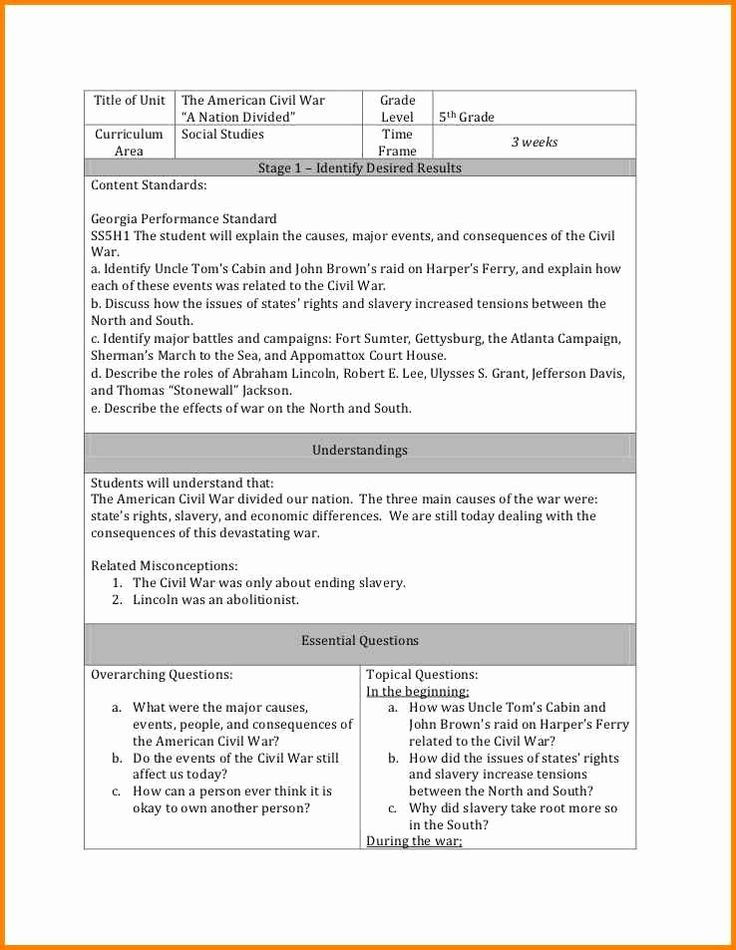Table Of Content

The table below lists these three stages, alongside the tasks and considerations that are central to each stage. ” This is a very common question we get from teachers who are excited about using manipulatives, but struggling to determine which manipulatives are the most appropriate as they integrate concrete, pictorial and abstract... Consider these questions when determining acceptable of language learning and progressing in proficiency. Your mission for Part 2 is to look over your notes about the targeted content and skills and craft an assessment that encompasses each goal. You don’t HAVE to have these supplies, but it makes the job go smoother. If you have any additional questions or want to share your experiences with this approach, leave a comment below!
In K-12 Education
Formative assessments can include short quizzes, peer evaluations, discussions, one-on-one student-teacher interviews and student self-reflections. The intention of these progress assessments should be to gauge abilities like critical thinking, inquiry, problem-solving and foundational knowledge as it pertains to the course content. Some teachers may fear that backward design emphasizes “teaching to the test,” which puts unfair pressure on students to learn for the sake of the final assessment. However, it is up to the skilled teacher to emphasize the process of gaining new knowledge, as opposed to acing the final test. While it can be difficult to grasp at first, backward design encourages educators to be intentional with their lesson planning, since it imbues the class time with a specific purpose. This lesson planning template will walk teachers through the three steps of the backwards design process in order to plan an effective lesson.
World Readiness Standards
This is a simple example of the difference between forward and backward planning. Forward planning is short-term and fixes the immediate issue, whereas backwards design starts with the end goals in mind. We believe that all students should learn or maintain at least one world language in addition to English. Therefore, language learning should be a central part of any curriculum. The key question is whether a one-size-fits-all approach can adequately cater to a classroom that is increasingly diverse in terms of learning styles, physical abilities, and cultural backgrounds. This is particularly burdensome for educators who may already be grappling with other responsibilities like grading, classroom management, and ongoing professional development.

Foreign Language Annals
This Drake Institute program offers guidance and compensation to full-time (.75 FTE) faculty at Ohio State for time spent researching evidence-based teaching practices and redesigning their courses around those teaching practices. In other words, by figuring out how you want your students to end up, you’ll be better equipped and prepared to teach them the right things so they achieve those optimal outcomes. Backward design can be useful for professional educators and for anyone who teaches students, both online and in person. Check out this backward design lesson plan template from Vanderbilt University.
When you set goals upfront, you may base them on assumptions about student potential. These assumptions may not accommodate the needs or potential of individual students. Exploring the philosophy, process and benefits of backward lesson design. It’s not a quick or easy process, but putting in the time to plan up front saves you time in the long run because you can address misconceptions before they happen. A Bronx, NY veteran high school social studies teacher who has learned most of what she has learned through trial and error and error and error.... That said, backward planning is something I have been doing before I ever heard about Understanding By Design.
Center for Teaching
Instructional activities are the specific ways in which students interact with the course content. These activities run the gamut from watching educational videos, creating posters or presentations, completing a group project or playing learning-based games. Successful lesson plans often contain a mix of instructional strategies and activities, since asking students to adapt to different modes of learning is an effective way to keep them engaged. Introduction to backwards planning changed the foundations of my own instruction. All too often, I would combine course competencies, my class textbook, and previous curriculum to create individual learning experiences.
Center for the Advancement of Teaching Excellence
Unfortunately, this results in tests or assessments that don’t always reflect what the students did or learned. We’ve all experienced an unfortunate class or two where the test didn’t seem to reflect anything we had learned in lessons or course materials up until that point. This is done by incorporating different learning modalities and styles into the design process to ensure that engagement is high. Educators can follow a simple process to develop backward lesson plans for higher education. This approach applies to any field, including business, the sciences and STEM.
Here is a hack I use to plan my lessons based on the desired results and final assessment. I fill in a simple chart when planning out the unit and use that to drive my lessons. Wiggins and McTighe have created a six-part checklist built on the acronym WHERETO that consists of key elements that should be included in your instructional materials and learning activities. Backward design is one of the core practices for effective language instruction that relies on thinking purposefully about teaching and learning.
ACTFL Assessments
Design Effective World Language Courses - Language Magazine
Design Effective World Language Courses.
Posted: Mon, 29 May 2023 07:00:00 GMT [source]
While we might call Understanding by Design “backwards planning,” it doesn’t feel backward at all. I don’t wait until the final day of the semester to ask my students what their goals are for their time in my course. I ask it in the first five minutes of our initial meeting, because I want them to understand that everything we do together seeks to satisfy those goals. Applying the same process to my own lesson planning just seems like good sense. With clear results and methods of assessing understanding in place, the teacher can now tailor the instructional strategies to help students attain new understandings of the content. Also having done backwards design, the teacher isn’t bound by the traditional textbook and can pull together different resources, such as Kognity, which does the task for you and presents the information in a better format.
What if lesson planning was rooted in specific learning goals and skills rather than general topics? And what if assessments were designed before the daily lessons and activities? Thinking about your lessons backward can actually help move student learning forward. Another benefit of backward design is that it allows for more flexibility and adaptability in teaching. By starting with the end goal in mind, teachers can adjust their instruction and activities to meet the needs of their students better. This can lead to more engaging and effective learning experiences tailored to each student's individual needs and interests.
When done well, backward design lesson plans often result in better test or assessment outcomes, which can be advantageous both for professional educators and for online teachers of all other types, like small business owners. Academic standards usually provide the best direction for educational goals. For example, according to the Common Core Standards for Mathematical Practice, students should be able to understand the concept of ratios by the end of sixth grade. It is the teacher’s job to determine, via backward lesson design, how their students will reach the necessary level of proficiency.
Your completed Course Plan should lay out, in brief, the weekly assessments, course content, and teaching strategies and activities that align to the learning outcomes you create in Step 2 below. Basically, focus on identifying the desired results, which should be student-centered. Then your course design will have learning experiences tailored toward those learning outcomes.
From there, the instructor plans lectures, activities, and assignments to help students engage with that content. If those lectures, activities, and assignments are effective, students will learn something about the content. Depending on the quantity and quality of learning that results, the instructor might decide to try other teaching strategies the next time they teach the course. When designing lessons, ensure your instructional strategies and course design both emphasize the knowledge and skills your students need to achieve the learning goals you set/identified earlier. At the same time, the other disadvantage of traditional lesson planning is that the process ignores the learner’s needs and role throughout the curriculum design process.

No comments:
Post a Comment